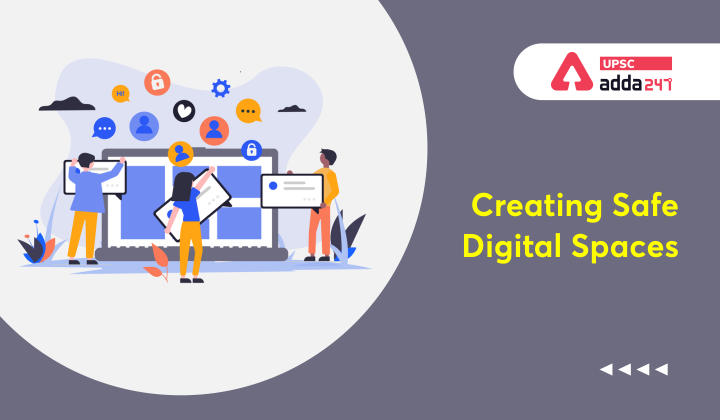Table of Contents
Creating Safe Digital Spaces- Relevance for UPSC Exam
- GS Paper 2: Security- Basics of cyber security; Challenges to internal security through communication networks.
Creating Safe Digital Spaces- Context
- The UNESCO Member States have declared the first Thursday of November as the International Day against Violence and Bullying at School, including cyberbullying.
- Through this, UNESCO Member States recognizes that school-related violence is an infringement of children’s right to education and to health and well-being.
Creating Safe Digital Spaces- International Day against Violence and Bullying at School
- About: Each year first Thursday of November is to be observed as the International Day against Violence and Bullying at School, including cyberbullying.
- Aim: to raise awareness among students, parents, members of the school community, education authorities and others about the problem of online violence and cyberbullying.
Cybersecurity Guidelines for Power Sector
Creating Safe Digital Spaces- Vulnerability of Children
- Increasing Access to the Internet: In India, an estimated 71 million children aged 5-11 years access the Internet on the devices of their family members, constituting about 14% of the country’s active Internet user base of over 500 million.
- Two-thirds of Internet users in India are in the age group of 12-29 years.
- Covid-19 Impact: School closures as a response to the COVID-19 lockdowns have led to an unprecedented rise in unsupervised screen time for children and young people, which in turn exposed them to a greater risk of online violence.
- According to various reports, cyberbullying has negative consequences on the education, health and well-being of children and young people.
- UNESCO’s report (2019): Highlighted the extent of the problem, with almost one in three students worldwide reporting being bullied at least once in the preceding month.
- Gender-based online violence: A 2020 study by Plan International revealed that 58% of girls in the Asia-Pacific region reported online harassment.
- Globally, of the girls who were harassed, 14% who self-identified as having a disability and 37% who identified themselves as from an ethnic minority said they get harassed because of it.
- Impact on mental health: The impact of online sexual harassment could have long-term negative impacts on mental health and well-being.
- Children who are frequently bullied are nearly three times more likely to feel left out at school than those who are not.
- They are also twice more likely to miss out on school and have a higher tendency to leave formal education after finishing secondary school.
Luminescent Security Ink- Combating Counterfeiting through Security Ink
Creating Safe Digital Spaces- Way Forward
- Formulate gender-sensitive and targeted approaches: that should respond to the needs of learners who are most likely to be the victims of online violence.
- Empowering and educating students and school administration to deal with different types of online violence:
- Provide children and young people with the knowledge and skills to identify online violence so that they can protect themselves from its different forms, whether perpetrated by peers or adults.
- Teachers also play a critical role by teaching students about online safety, and thus supporting parental involvement.
- Ensure the creation of safe digital spaces and addresses the nuances of security by preventing and countering cyberbullying.
- Department of School Education and Literacy has circulated exhaustive guidelines to raise children and parental awareness with an aim to prevent the adverse effect of online gaming and the psycho-emotional stress that children could be undergoing.
- Establish confidential reporting and redress services: This will build trust in the system and help victims in reporting the online harassment incidents.
No change- FATF decision on Pakistan
Creating Safe Digital Spaces- Conclusion
- We should encourage students, parents, schools, education authorities, members of the education community and its partners to take part in preventing online violence and promoting the safety and well-being of young people.
US joins India-led International Solar Alliance





 TSPSC Group 1 Question Paper 2024, Downl...
TSPSC Group 1 Question Paper 2024, Downl...
 TSPSC Group 1 Answer key 2024 Out, Downl...
TSPSC Group 1 Answer key 2024 Out, Downl...
 UPSC Prelims 2024 Question Paper, Downlo...
UPSC Prelims 2024 Question Paper, Downlo...
